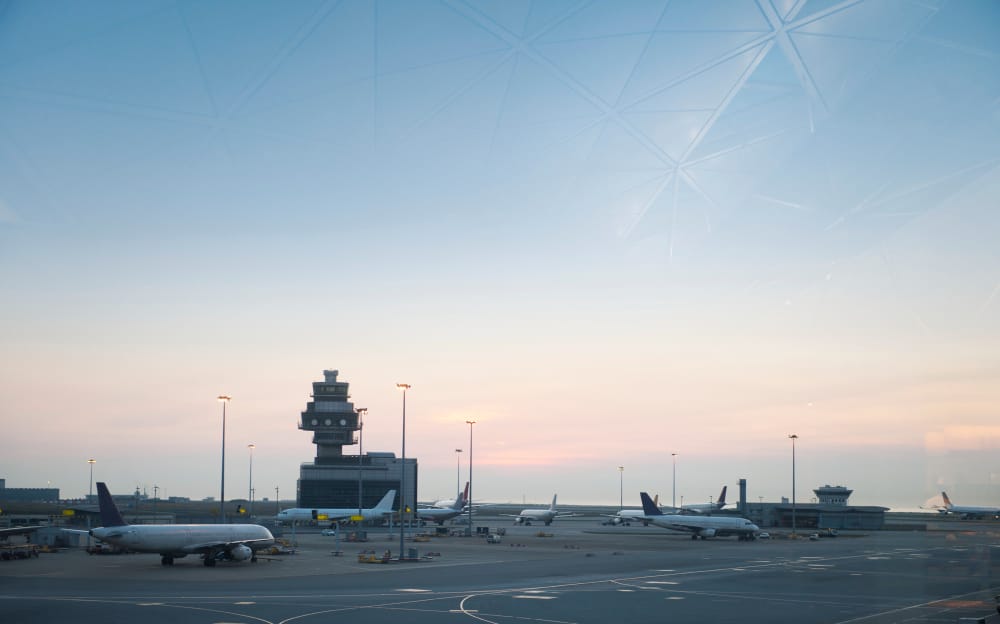Table of contents
ToggleThe ATM-EXCITE project, supported by the SESAR3 Joint Undertaking under Horizon Europe, is reshaping the future of air traffic management. As European skies grow more complex, with commercial flights, drones, and military operations sharing the same space, traditional systems face increasing strain. This is where innovation takes flight. To meet these challenges, the project is developing and testing five innovative solutions, including a multi-agent simulation model and methods for ADS-B data verification and selective encryption. The ultimate goal is to create safer skies, fewer delays, and optimized routes that benefit passengers, operators, and the environment alike. In this article, we explore how cutting-edge technologies, like machine learning, are driving the next era of ATM.
The rising complexity of European air traffic
European airspace is evolving at an unprecedented pace. Beyond traditional commercial flights, skies are now shared with drones, unmanned aerial vehicles (UAVs), and increasing military activity. This diversity creates a complex environment where conventional air traffic systems struggle to keep up. Coordinating civil and military operations, while ensuring safety and efficiency, has become a pressing challenge.
At the same time, growing passenger demand and climate concerns put additional pressure on the system. Delays, congestion, and inefficient routes are no longer minor inconveniences, they have direct impacts on safety, operational costs, and sustainability.
This is why ATM trajectory optimization is more critical than ever. Advanced technologies are needed to anticipate and manage flight paths in real time. Projects like ATM-EXCITE provide innovative solutions to these challenges, ensuring European skies remain safe, secure, and efficient despite increasing complexity.
How machine learning transforms flight trajectory prediction
Traditional air traffic management relies on fixed models and historical averages to estimate flight paths. While useful, these methods struggle when faced with the unpredictable, sudden weather shifts, airspace restrictions, or the growing presence of drones. This is where AI flight prediction makes a decisive difference.
By using advanced machine learning algorithms, systems can analyze massive volumes of data in real time. These models learn from past flight records, weather conditions, and live traffic updates, adapting instantly to changing circumstances. The result is a more precise forecast of where an aircraft will be at any given moment.
This increased accuracy translates directly into safety and efficiency. With machine learning in air traffic, controllers can anticipate conflicts earlier, reroute flights proactively, and reduce unnecessary holding patterns. Airlines benefit from fewer delays and optimized fuel usage, while passengers enjoy smoother journeys.
In short, AI flight prediction shifts air traffic management from reactive problem-solving to proactive optimization. For projects like ATM-EXCITE, it marks a leap forward in building the next generation of smart, adaptive skies.
The role of historical data in predictive algorithms
One of the most powerful aspects of ATM trajectory optimization lies in the ability of algorithms to learn from the past. Every flight generates valuable data: routes taken, air traffic density, weather conditions, delays, and even maintenance records. When collected over years, this information becomes a vast dataset that fuels predictive modeling.
Machine learning systems use this historical data to identify recurring patterns. For instance, if certain routes frequently experience delays due to seasonal storms or heavy traffic, the model can anticipate similar disruptions in the future. Combined with live updates, this creates a dynamic picture of airspace conditions, where forecasts are constantly refined.
The advantage is clear: by blending the lessons of history with real-time monitoring, predictive algorithms enable far more accurate AI flight prediction. Controllers can anticipate bottlenecks, airlines can plan more efficient schedules, and safety margins can be increased without compromising capacity.
Through this approach, projects like ATM-EXCITE are proving that historical data isn’t just about recording the past, it’s the foundation for building smarter, more resilient skies.
Benefits of machine learning for European airspace
The adoption of machine learning in air traffic delivers clear benefits across the European aviation ecosystem. For passengers, it means fewer delays and smoother journeys. For airlines, optimized routes reduce fuel use, lowering both costs and emissions. For controllers, ATM trajectory optimization ensures safer skies by providing earlier conflict detection and smarter rerouting options.
Beyond efficiency and safety, these technologies also support Europe’s sustainability goals. Smarter predictions lead to shorter flight times, less congestion, and reduced environmental impact. Combined, these outcomes make AI flight prediction not just a technological upgrade, but a strategic advantage, one that strengthens resilience, improves coordination, and ensures European airspace remains among the safest and most efficient in the world.

Frequently asked questions
To better understand the impact of these innovations, let’s look at some frequently asked questions about AI flight prediction and ATM trajectory optimization.
How is AI used in predicting flight trajectories?
AI flight prediction works by analyzing massive datasets, including historical flight paths, weather conditions, and real-time air traffic information. Machine learning models identify patterns and continuously update predictions as new data flows in. This allows controllers to anticipate conflicts, optimize routes, and adapt quickly to unexpected changes. The result is a system that reacts faster and more accurately than traditional methods.
What are the benefits of machine learning in ATM?
The benefits of machine learning in air traffic are wide-ranging. For air traffic controllers, it means earlier detection of potential issues and more efficient rerouting. For airlines, it translates into reduced delays, fuel savings, and cost efficiency. Passengers benefit from smoother journeys, while society gains from lower emissions. At a system-wide level, ATM trajectory optimization improves safety, efficiency, and coordination across civil and military operations.
Can AI reduce flight delays?
Yes. One of the most tangible impacts of AI flight prediction is the reduction of flight delays. By forecasting congestion points and suggesting optimized routes, AI helps minimize holding patterns and unnecessary detours. Predictive algorithms can also anticipate weather disruptions, enabling controllers to reroute flights before delays cascade. Airlines save fuel, passengers arrive on time, and airspace runs more smoothly—all thanks to proactive, data-driven management.
Machine learning and initiatives like ATM-EXCITE are redefining air traffic management, delivering safer skies, fewer delays, and optimized trajectories, proof that AI-driven innovation is not a distant vision but a present reality shaping the future of European aviation.




